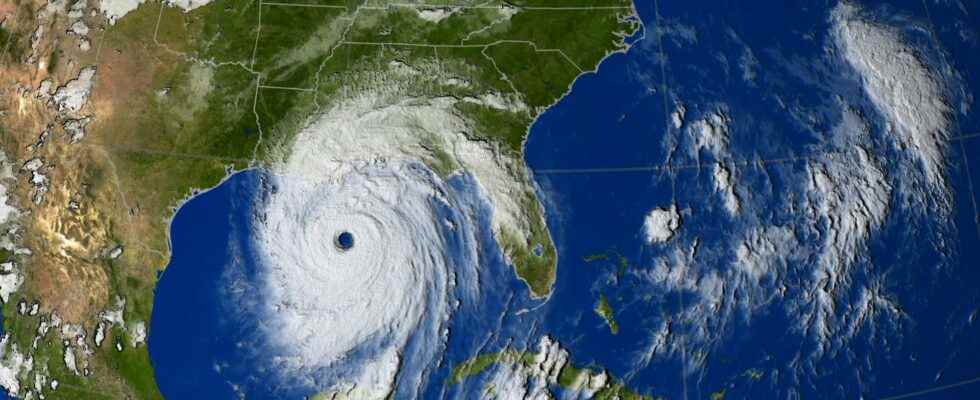Warming oceans contribute to more powerful hurricanes, like the last seasons cyclones marked by violent phenomena and a record year, that of 2020. For the 7e consecutive year, the hurricane season which starts (from 1er June to November 30) looks more intense than average. The last few years have been marked by a very rapid intensification of hurricanes in contact with the warm waters they cross. A trend that is not about to stop with the constant rise in the global level of temperatures linked to emissions of greenhouse gas from human activities. Failing to reverse the trend, coastal cities must imperatively prepare to face new damage. That’s the whole point of the University of Florida experiment : simulate the damage related to the wind and the rising waters of a hurricane major, even stronger than those that the United States has already known, to better prepare cities for a possible disaster.
Winds at 300 km/h in an experimental hangar
To try to understand the effects of a category 6 hurricane, the scientists imagined a real disaster movie scenario in a hangar specially designed for the experiment: winds at 300 km/h blowing on a house in wood of two floors and snatching the roofthen one vague of six meters submerging the structure, completely unhooking the house from its foundations, washed away by the water. The National Science Foundation allocated $12.8 million to scientists to build this experiment hangar. This must be designed to be able to simulate winds of at least 290 km/h and waves of several meters. More concretely, the results of the experiment should make it possible to work on materials of construction more resistant for buildings and roads, and on a new layout of the electrical network and the water distribution network. To date, no such project has been carried out.
To carry out this project, the University of Florida is putting together a team of engineers, experts in natural disastersspecialists in forecasting models and meteorologists. The University of Florida has already created a wall of the wind (the wow, for wall of wind)a hurricane simulator in a hangar with 12 giant fans capable of producing winds up to 252 km/h, equivalent to a category 5 hurricane. trees and wooden houses to test their resistance in the wind. The new experiment hangar should raise the bar, but such a project will require at least four years of work and will therefore not be ready before 2026.
Category 6 hurricanes have happened before, some scientists say
The idea of preparing for winds above 300 km/h may seem extreme, but it is actually quite realistic according to the University of Florida: in recent years, hurricanes Dorian (2019), Irma (2017) in the Atlantic and the Super Typhoon Haiyan (2013) in the Pacific all generated winds above 290 km/h: this type of cyclones is already considered by some scientists as category 6 phenomena on theSaffir-Simpson scale which has five categories, although no category 6 officially exists: category 5 has no limit since it designates phenomena with winds greater than 251 km/h with waves greater than 5.5 meters . But, as the University of Florida points out: the classification scale could already include a 6e category “.
Special offer: for Father’s Day, offer the best of Science!
Your father is a great science enthusiast and unusual discoveries? And if you offer him a superb scientific exploration in paper format? Benefit from -20% on the Mag Futura (special offer: €15 instead of 19 €): 220 pages to explore 4 scientific issues that will shape our future!
Mag Futura is:
- 4 major scientific questions for 2022, from the Earth to the Moon
- 220 pages, 60 experts: no fake news, just science
- Home delivery with electronic gift card
- An independent scientific media
Interested in what you just read?
